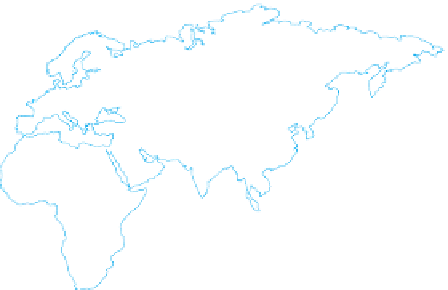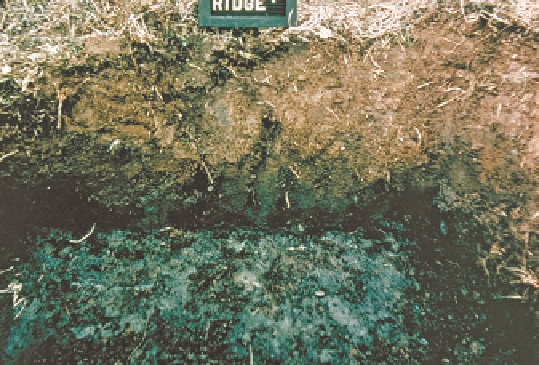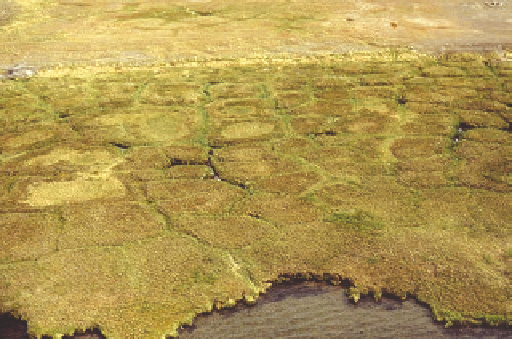Geoscience Reference
In-Depth Information
Global distribution of Gelisols
Figure 11.29 Gelisols.
(a) General-
ized map of Gelisols on Earth. These
soils are found in about 9% of Earth's
ice-free land area. (
Source:
U.S.
Department of Agriculture.) (b) A Geli-
sol in Alaska. The lighter horizon at
the base of the soil is permafrost. (c) A
typical Gelisol landscape in Alaska. The
distinct polygons on the ground, called
patterned ground
, form as a result of
repeated freezing and thawing.
(a)
(b)
(c)
litter layer that depresses the pH sufficiently to mobilize iron and
aluminum sesquioxides. In grassland environments, where calci-
fication takes place, the grasses play an important role in soil for-
mation because they are base cyclers. The first part of the cycle
occurs when grasses absorb bases as nutrients during the growing
season. When the grass dies, however, the bases contained within
the grass are cycled back into the soil as it decomposes.
Here is where the role of climate becomes important. If
this base cycling somehow occurred in a humid environment,
the bases would be leached completely out of the soil because
they are so easily mobilized. Given the general moisture deficit
that occurs in places like the Great Plains or the Russian steppe,
however, the bases are not completely leached. Instead, they are
merely translocated to the zone of illuviation, or B horizon, just
like iron and aluminum where podzolization occurs. Since this
part of the soil is rich in calcium, it is called a
calcic horizon
.
This process can ultimately result in the complete cementation
(solidification) of the B horizon by calcium carbonate, resulting
in material called
caliche
.
Mollisols are also distinctive because they have thick, dark
A horizons with high humus content (Figure 11.30c). This
horizon forms in part because grasses decompose slowly in the
relatively dry environment, therefore slowly and consistently
adding humus to the soil. Grass also has a dense underground
root system that contributes to the high content of organic mat-
ter and calcium minerals in these soils. Soil organisms, like
earthworms, ants, and moles, mix the soils, carrying organic
matter deeper below the surface. Given the association with the
calcification process, the B horizons of Mollisols are rich in cal-
cium; the B horizon of a Mollisol is saturated at least to a level
of 50% by bases such as calcium ions. It also often contains an
abundance of translocated clays. As a result, the B horizon of
a well-developed Mollisol is designated as a Btk (“k” meaning
abundant calcium carbonate) horizon.
Calcic horizon
A diagnostic soil horizon of calcification
enriched in illuviated calcium carbonate.







































































































































